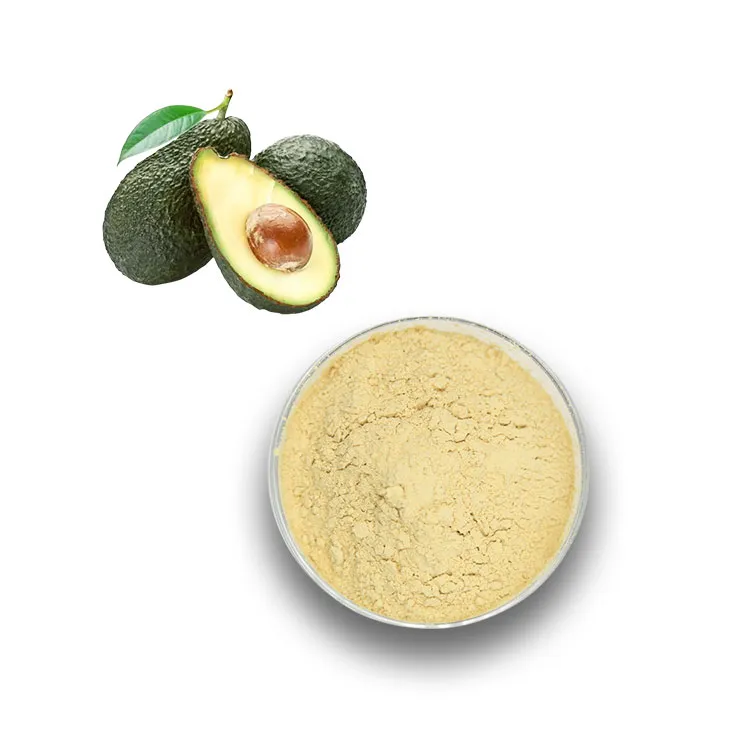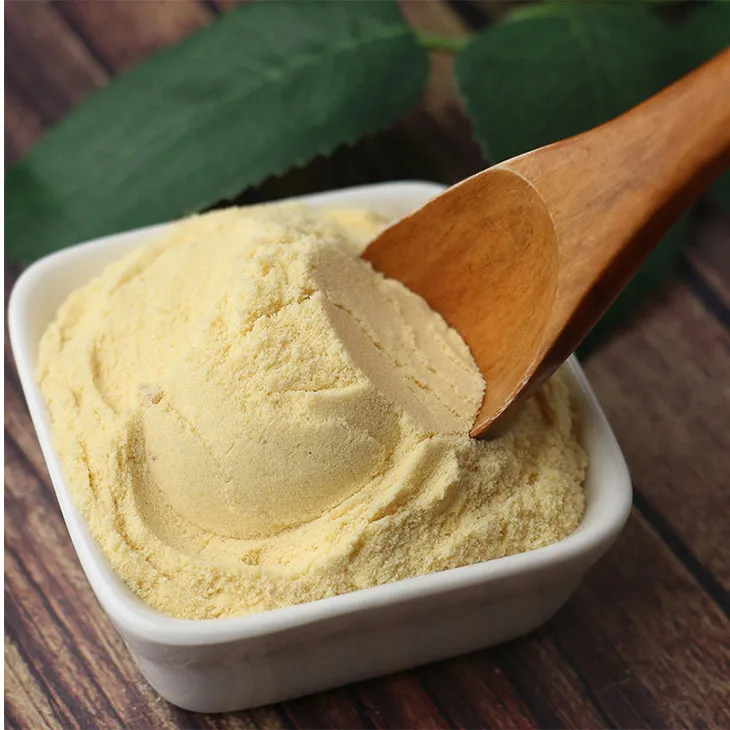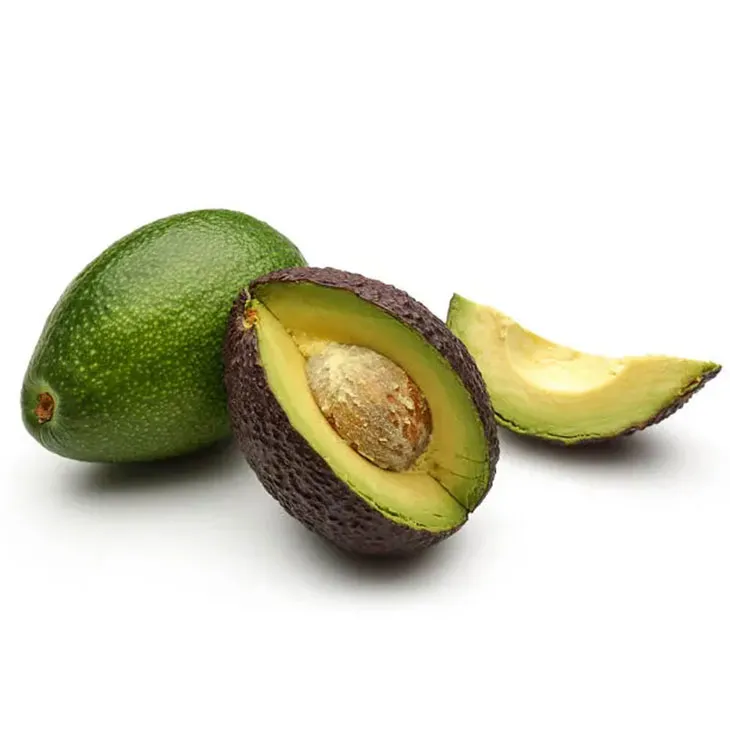- 0086-571-85302990
- sales@greenskybio.com
The process of extracting avocado oil from avocado extract powder.
2024-11-27

1. Introduction
Avocado, known for its numerous health benefits, has become a popular ingredient in various industries. Avocado oil, in particular, is highly valued for its rich nutritional profile, which includes healthy fats, vitamins, and antioxidants. Avocado Extract Powder is a concentrated form of avocado components and serves as an excellent starting material for oil extraction. This article aims to explore the different methods of extracting avocado oil from this powder and the factors that influence the quality and yield of the extracted oil.

2. Avocado Extract Powder: A Valuable Source
Avocado Extract Powder contains a wide range of compounds such as fatty acids, sterols, and phenolic compounds. These components play a crucial role in the properties of the avocado oil that can be extracted from it. The quality of the extract powder, which is determined by factors like the source of the avocados, the extraction method used to obtain the powder, and its storage conditions, has a significant impact on the final oil product.

3. Solvent Extraction
3.1. Principle
Solvent extraction is one of the most common methods for extracting oils from various sources, including avocado extract powder. In this method, a suitable solvent is used to dissolve the oil from the powder. The principle behind it is based on the solubility of the oil components in the chosen solvent. Common solvents used for avocado oil extraction include hexane, ethanol, and isopropyl alcohol.
3.2. Procedure
- The avocado extract powder is first placed in a suitable extraction vessel.
- The selected solvent is added to the powder in a specific ratio. For example, a common ratio could be 1:5 (powder to solvent by weight).
- The mixture is then stirred thoroughly to ensure good contact between the powder and the solvent. This can be done using a mechanical stirrer at a moderate speed, typically around 200 - 300 revolutions per minute (rpm), for a period of about 30 minutes to 1 hour.
- After stirring, the mixture is allowed to stand for a certain period, usually 1 - 2 hours, to allow the oil to dissolve completely in the solvent.
- The solvent - oil mixture is then separated from the remaining solid residue. This can be achieved through filtration using filter paper or a Buchner funnel. The filtrate contains the dissolved oil in the solvent.
- Finally, the solvent is removed from the oil - solvent mixture to obtain the pure avocado oil. This can be done through evaporation under reduced pressure or by using a rotary evaporator. The evaporation temperature should be carefully controlled to avoid degradation of the oil components, usually in the range of 40 - 60 °C.
3.3. Advantages and Disadvantages
-
Advantages:
- Solvent extraction is a relatively efficient method, capable of extracting a high percentage of the oil from the avocado extract powder. It can also be scaled up easily for industrial production.
- Using different solvents allows for some selectivity in the extraction process, which can be useful for obtaining oils with specific properties.
-
Disadvantages:
- The use of solvents poses potential safety and environmental risks. Solvents such as hexane are flammable and may require special handling procedures. Additionally, solvent residues in the final oil product may be a concern, especially if the solvent is not completely removed.
- The extraction process may also lead to the extraction of some unwanted components along with the oil, which may affect the quality of the final product.

4. Supercritical Fluid Extraction
4.1. Principle
Supercritical fluid extraction (SFE) is a more advanced method for extracting avocado oil from extract powder. A supercritical fluid is a substance that is maintained at a temperature and pressure above its critical point, where it exhibits properties between those of a gas and a liquid. For avocado oil extraction, carbon dioxide (CO₂) is the most commonly used supercritical fluid. The principle of SFE is based on the ability of the supercritical fluid to selectively dissolve the oil components from the powder due to its unique solvating properties at supercritical conditions.
4.2. Procedure
- The avocado extract powder is placed in an extraction chamber of an SFE apparatus.
- Carbon dioxide is introduced into the chamber and pressurized to its supercritical state. The typical pressure range for supercritical CO₂ extraction of avocado oil is around 10 - 50 MPa, and the temperature is usually maintained between 30 - 60 °C.
- The supercritical CO₂ is then circulated through the powder for a specific period, typically 1 - 3 hours, to dissolve the oil components.
- After extraction, the pressure of the system is gradually reduced in a controlled manner. This causes the supercritical CO₂ to return to its gaseous state, and the dissolved oil is separated from the CO₂. The separated oil is collected in a receiver vessel.
4.3. Advantages and Disadvantages
-
Advantages:
- Supercritical fluid extraction using CO₂ is a clean and environmentally friendly method as CO₂ is non - toxic, non - flammable, and leaves no harmful residues in the final oil product. It also offers high selectivity, allowing for the extraction of pure and high - quality avocado oil.
- The extraction conditions (temperature and pressure) can be precisely controlled, which helps to preserve the quality of the oil components, especially the heat - sensitive ones.
-
Disadvantages:
- The SFE equipment is relatively expensive, which may limit its use in small - scale operations. The operation also requires specialized technical knowledge and trained personnel.
- The extraction process may be relatively slow compared to some other methods, especially when dealing with large quantities of avocado extract powder.

5. Cold - Press Extraction
5.1. Principle
Cold - press extraction is a mechanical method that does not involve the use of solvents or high - temperature processing. The principle behind it is based on applying mechanical pressure to the avocado extract powder to squeeze out the oil. This method is considered more natural and is often preferred for producing high - quality, unrefined avocado oil.
5.2. Procedure
- The avocado extract powder is first compacted into a suitable form, such as a pellet or a cake. This can be done using a hydraulic press at a relatively low pressure, typically around 5 - 10 MPa, just to form a solid mass.
- The compacted powder is then placed in a cold - press extraction device, which consists of a piston and a chamber. The piston exerts a high mechanical pressure on the powder. The pressure applied can range from 20 - 50 MPa.
- As the pressure is applied, the oil is gradually squeezed out of the powder and collected in a separate container. The extraction process can take several hours, depending on the amount of powder and the efficiency of the press.
5.3. Advantages and Disadvantages
-
Advantages:
- Cold - press extraction produces a high - quality, natural - tasting avocado oil with a high content of nutrients and antioxidants. Since no solvents are used, there is no risk of solvent residues in the final product.
- It is a relatively simple and straightforward method, which can be carried out on a small - scale, such as in artisanal or home - based production.
-
Disadvantages:
- The yield of oil obtained through cold - press extraction is relatively low compared to solvent extraction or supercritical fluid extraction methods. This means that more avocado extract powder is required to obtain a significant amount of oil.
- The extraction process is time - consuming, especially when dealing with large quantities of powder.
6. Factors Influencing the Quality and Yield of Extracted Oil
6.1. Quality of the Extract Powder
The quality of the avocado extract powder is a crucial factor in determining the quality and yield of the extracted oil. If the powder is of high quality, with a rich content of oil - bearing components and free from contaminants, it is more likely to yield a high - quality oil in a higher quantity. Factors such as the variety of avocados used to make the powder, the maturity of the avocados at the time of extraction, and the processing conditions during powder production all affect the quality of the powder.
6.2. Extraction Temperature
- For solvent extraction, the extraction temperature affects both the solubility of the oil in the solvent and the stability of the oil components. If the temperature is too high, it may lead to the degradation of some heat - sensitive components in the oil, resulting in a lower - quality product. On the other hand, if the temperature is too low, the extraction efficiency may be reduced.
- In supercritical fluid extraction, the temperature is an important parameter for maintaining the supercritical state of the fluid. A deviation from the optimal temperature range can affect the solubility of the oil in the supercritical fluid and, consequently, the yield and quality of the extracted oil.
- For cold - press extraction, although the process is generally carried out at room temperature or slightly above, excessive heat generation during the pressing process due to friction can also affect the quality of the oil. Therefore, proper cooling mechanisms may be required to maintain the quality of the extracted oil.
6.3. Extraction Time
- In solvent extraction, the extraction time determines the extent of oil dissolution in the solvent. A longer extraction time may increase the yield of oil, but it also increases the risk of extracting unwanted components and may lead to degradation of the oil if the extraction is carried out for an excessive period.
- In supercritical fluid extraction, the extraction time affects the amount of oil that can be dissolved in the supercritical fluid. However, a very long extraction time may not be economically viable and may also affect the quality of the oil due to prolonged exposure to the extraction conditions.
- In cold - press extraction, a longer extraction time may slightly increase the yield of oil, but it is also limited by the mechanical properties of the powder and the equipment used. Prolonged pressing may also lead to the generation of heat, which can affect the quality of the oil.
7. Conclusion
Extracting avocado oil from avocado extract powder can be achieved through different methods, each with its own advantages and disadvantages. Solvent extraction is efficient but has potential safety and quality concerns due to solvent use. Supercritical fluid extraction offers high quality and environmental friendliness but is expensive and relatively slow. Cold - press extraction produces a natural - quality oil but has a low yield and is time - consuming. The quality and yield of the extracted oil are influenced by factors such as the quality of the extract powder, extraction temperature, and extraction time. Understanding these methods and factors is crucial for producers who aim to obtain high - quality avocado oil from avocado extract powder.
FAQ:
Question 1: What are the main components in avocado extract powder relevant to avocado oil extraction?
Avocado extract powder contains lipids, which are the main source for avocado oil extraction. Additionally, it may have various other substances such as proteins, carbohydrates, and some minor nutrients. However, the lipids are of primary importance as they are transformed into avocado oil during the extraction process.
Question 2: How does solvent extraction work in obtaining avocado oil from the extract powder?
In solvent extraction, a suitable solvent is used. The solvent is mixed with the avocado extract powder. The solvent has the ability to dissolve the oil components present in the powder. After thorough mixing, the mixture is filtered or centrifuged to separate the solvent - oil solution from the remaining solid components. Then, the solvent is removed, usually through evaporation, leaving behind the avocado oil. Commonly used solvents include hexane, although efforts are being made to find more environmentally friendly solvents.
Question 3: What are the advantages of supercritical fluid extraction over other methods?
Supercritical fluid extraction has several advantages. Firstly, it can operate at relatively low temperatures, which helps in preserving the quality of the extracted oil as it reduces the chances of thermal degradation. Secondly, it can achieve high selectivity, meaning it can target and extract the oil more efficiently while leaving behind unwanted substances. Also, supercritical fluids, such as carbon dioxide, are generally considered more environmentally friendly compared to some traditional solvents used in other extraction methods.
Question 4: How does cold - press extraction contribute to the quality of the avocado oil?
Cold - press extraction involves mechanical pressure without the use of heat or solvents. This method helps in maintaining the natural properties of the avocado oil. Since there is no heat involved, there is less risk of destroying the beneficial components like antioxidants and vitamins present in the oil. It also results in an oil with a more natural flavor and aroma, which is highly desirable in high - quality avocado oil products.
Question 5: What role does the quality of the extract powder play in the yield of avocado oil?
The quality of the extract powder is crucial for the yield of avocado oil. If the powder has a high concentration of lipids, it is more likely to yield a greater amount of oil. Additionally, the purity of the powder, free from contaminants and excessive amounts of non - lipid substances, can also impact the extraction efficiency. A high - quality powder with intact lipid structures is more amenable to the extraction processes, leading to a higher oil yield.
Related literature
- Avocado Oil Extraction: A Comprehensive Review"
- "Advances in Avocado Oil Production from Extract Powder"
- "The Science Behind Avocado Oil Extraction from Powdered Sources"
- ▶ Hesperidin
- ▶ Citrus Bioflavonoids
- ▶ Plant Extract
- ▶ lycopene
- ▶ Diosmin
- ▶ Grape seed extract
- ▶ Sea buckthorn Juice Powder
- ▶ Fruit Juice Powder
- ▶ Hops Extract
- ▶ Artichoke Extract
- ▶ Mushroom extract
- ▶ Astaxanthin
- ▶ Green Tea Extract
- ▶ Curcumin
- ▶ Horse Chestnut Extract
- ▶ Other Product
- ▶ Boswellia Serrata Extract
- ▶ Resveratrol
- ▶ Marigold Extract
- ▶ Grape Leaf Extract
- ▶ New Product
- ▶ Aminolevulinic acid
- ▶ Cranberry Extract
- ▶ Red Yeast Rice
- ▶ Red Wine Extract
-
Curcumin Extract
2024-11-27
-
Polygonum multiflorum extract
2024-11-27
-
Curcuma Longa Extract
2024-11-27
-
Tongkat Ali Extract Powder
2024-11-27
-
Senna Leaf Extract
2024-11-27
-
Purple Sweet Potato Extract
2024-11-27
-
Wheat Germ Extract
2024-11-27
-
Selenium yeast
2024-11-27
-
Garcinia Cambogia Extract
2024-11-27
-
Boswellia Serrata Extract
2024-11-27





















